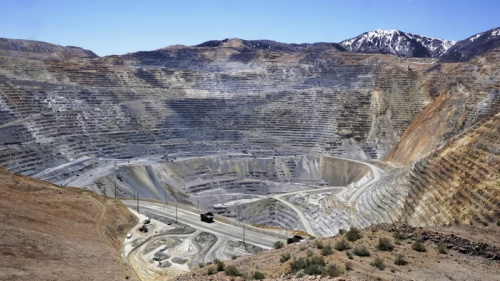Copper Deficit Deepens: Mining Stocks vs. Futures for Exposure

Copper, often dubbed the “lifeblood of the new energy era,” is gaining unprecedented global attention. Thanks to its excellent conductivity, ductility, and corrosion resistance, copper is widely used in power grids, electric vehicles (EVs), renewable energy infrastructure, and data centers. Statistics show that around 50% of global copper consumption is in the power sector, and the share attributed to the clean energy segment has already reached 20%. Copper consumption in the electric vehicle sector is projected to rise significantly—from roughly 800,000 tons in 2020 to nearly 4 million tons by 2030—highlighting the metal's growing importance in the global transition to clean energy and prompting a reassessment of its strategic value by investors.
A Looming Shortage: Widening Supply-Demand Gap
The International Energy Agency (IEA), in its Global Critical Minerals Outlook 2025, warns that even with all current and announced copper mining projects, there will be a 30% supply shortfall by 2035 under existing policy scenarios. This gap could exceed 40% under a net-zero emissions trajectory. In other words, we are heading into a structural copper shortage.
Copper’s global production is highly concentrated—Chile, Peru, and the Democratic Republic of the Congo (DRC) collectively account for nearly half of global output. However, these regions are increasingly plagued by declining ore grades, stricter environmental regulations, frequent strikes, and political instability, all of which strain the supply chain. For instance, in late 2023, Panama’s Cobre Panama mine was shut down due to environmental rulings, directly dragging down 2024 global output.
In fact, copper ore grades have declined by roughly 40% since 1991. Although refining technologies such as solvent extraction and electrorefining have advanced, low-grade ores bring higher costs and operational complexity, dampening investment enthusiasm. Capital is hesitant, resources are depleting, and the supply-demand mismatch continues to deepen.
The Triple Engines of Copper Demand in the New Era
Copper’s scarcity is not purely geological—its true value lies in its strategic, irreplaceable applications:
1. AI and Computing Power Boom
The ongoing revolution in data infrastructure—data centers, power management systems, and cooling servers—is driving up demand for copper components.
2. Energy Transition
Wind, solar, and energy storage systems all require vast amounts of copper for cables, converters, and inverters.
3. Traditional Infrastructure Resilience
In developing countries, upgrading electricity grids remains a national priority and long-term driver of copper demand.
Driven by overlapping demand from multiple sectors, copper is set to emerge as one of the most strategically sought-after resources in the coming decades.
Risks to Watch: Technological Disruption and Policy Shocks
That said, copper’s future isn’t without caveats. Emerging technologies could pose disruptive threats. Companies like Tesla are already developing “copper-free motors”—if these alternatives achieve commercial viability, long-term copper demand could be hit.
Meanwhile, the EU’s Critical Raw Materials Act sets a goal of sourcing 10% of critical minerals domestically by 2030, potentially altering current supply chains. Additionally, the EU’s carbon border tax could raise smelting costs, further squeezing margins in the industry.
Copper Market Exposure: Mining Stocks vs. Futures
- Mining Stocks: Indirect, Risk-Laden Copper Plays
Mining stocks offer indirect exposure to copper prices. Key value drivers include reserve quality, operational efficiency, global footprint, and management strategy. If investors back industry leaders like BHP or Freeport-McMoRan—companies with high copper self-sufficiency and diversified portfolios—they may see steady gains during copper bull cycles.
However, mining companies often operate across multiple commodities—gold, zinc, coal, etc.—and their stock performance may swing with broader commodity cycles or macroeconomic shifts. Moreover, regulatory shifts, labor disputes, and environmental liabilities add layers of uncertainty. Mining stocks are relatively stable, but they carry “non-copper” risks.
- Copper Futures: High-Purity Exposure, Amplified Volatility
In contrast, copper futures offer pure exposure. Investors can trade contracts on the London Metal Exchange (LME), New York Mercantile Exchange (COMEX), or Shanghai Futures Exchange (SHFE), gaining direct leverage on copper price movements. Futures offer strong liquidity, making them well-suited for short-term trading strategies that demand quick market access and timely execution.
The inherent leverage in futures—requiring only margin deposits—means investors can control large positions with limited capital. While this creates upside potential, it also magnifies losses and demands rigorous risk management. Futures also serve as essential hedging tools for companies across the copper supply chain.
Investors confident in copper’s long-term growth potential and prepared to navigate near-term price swings may find futures to be a focused and effective tool for market exposure.
Investor Lens: Four Critical Signals
In such a complex landscape, copper prices are influenced not just by supply and demand but also by broader macro and micro forces. Key indicators to watch include:
- The Fed’s Dot Plot and Interest Rate Trajectory
Copper, as an industrial metal, is highly sensitive to macro monetary policy.
- LME Inventory Levels
These reflect real-time supply-demand imbalances.
- China’s Copper Treatment and Refining Charges (TC/RC)
These indicate downstream demand and processing industry margins.
- South American Copper Output Forecasts During the Rainy Season
These seasonal shifts often drive short-term price volatility.
Diversified Paths to Resource Exposure
Every copper price movement represents a tug-of-war between macro forces and market expectations. As renewable energy surges alongside traditional infrastructure upgrades, as tightening monetary policy collides with green transition efforts, and as legacy industries battle disruptive tech, copper’s financial significance now exceeds its physical utility.
For investors, both mining equities and futures offer valid but different paths. For those focused on long-term fundamentals, mining stocks offer a more stable investment path, while futures appeal to investors pursuing flexible, high-impact trading strategies. The key lies in understanding the risk architecture and adapting flexibly—seeking structural opportunities amid uncertainty.



